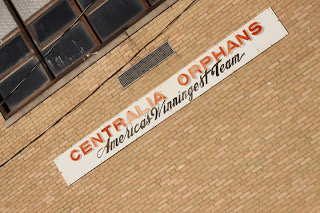It was after winning his first National Basketball Association Championship in 1991, that Michael Jordan would begin a long relationship with Gatorade, which would commence with a commercial that would become part of pop culture and lift up two brands to unimaginable recognition and gain. The story of how Michael Jordan came to endorse Gatorade is legendary among marketers but the more captivating story is the origin of the lyrics and song that made the Gatorade commercial popular and made every kid want to Be Like Mike.
 |
| Jordan's 1st NBA Championship - 1991 |
Originally, it was Pitzel's plan to use The Jungle Book music over the video, but he soon found out that Disney officials wanted $350,000 from Gatorade for a five-week commercial run in order to use the track. As a result, he decided that he would write his own lyrics that would play off the concept that everyone wanting to be Jordan. Pitzel then went to his favorite Chicago restaurant, Avanzare, to do some creative thinking. He soon started writing the following lyrics on the paper tablecloth:
Sometimes I dream
That he is me
You've got to see that's how I dream to be
I dream I move, I dream I groove
Like Mike
If I could Be Like Mike
Again I try
Just need to fly
For just one day if I could
Be that way
I dream I move, I dream I groove
Like Mike
If I could Be Like Mike
Several hours later, he faxed a ripped tablecloth with the lyrics to four different local music companies, hopeful that one of them would orchestrate a tune that would fit well with his lyrics, since he only had 48 hours left. One local pair of jingle writers took 'Be Like Mike' and really made it the chorus. They then hired eight singers to sing the work, rather than one, which sold the concept that everyone wanted to be like Mike. When finished, they knew that no other company would beat their catchy tune and Pitzel agreed.
Pitzel then drove up to Wisconsin to meet with Gatorade executives and to present the "Be Like Mike" lyrics and tune from a tape played on a boom box. Gatorade executives knew they had a winner. Pitzel then dreamed up the commercial's visual concept, which included a group of children trying to be like Mike in front of Jordan himself at a basketball court in Chicago. Additional footage was filmed of Jordan playing a pick-up game with grown-ups, goofing around and drinking Gatorade. These concepts tried to humanize Jordan since most thought of him as a basketball God. And although we may not be able to fly through the air or play basketball like Michael, we can be like him and drink Gatorade.
Pitzel then drove up to Wisconsin to meet with Gatorade executives and to present the "Be Like Mike" lyrics and tune from a tape played on a boom box. Gatorade executives knew they had a winner. Pitzel then dreamed up the commercial's visual concept, which included a group of children trying to be like Mike in front of Jordan himself at a basketball court in Chicago. Additional footage was filmed of Jordan playing a pick-up game with grown-ups, goofing around and drinking Gatorade. These concepts tried to humanize Jordan since most thought of him as a basketball God. And although we may not be able to fly through the air or play basketball like Michael, we can be like him and drink Gatorade.
The commercial ended with the simple phrase "Be Like Mike. Drink Gatorade" and that is exactly what happened when it aired in August, 1991. It was a defining moment in Gatorade's history, lifting an already popular product to even greater heights. It was a winner.
Jordan would go on to appear in over 20 Gatorade commericals, but "Be Like Mike" was the trend-setter because even today, you still hear kids and adults, singing the lyrics to "Be Like Mike". In 2003, Darren Rovell, who covers sports business for ESPN.com, wrote an article regarding Jordan's best commercials. All of Jordan's commercials, covering all of his endorsed products, were considered and it wasn't a surprise that "Be Like Mike" was rated #1 because of its popular tagline and catchy tune. I emailed Bernie Pitzel prior to our trip about the commercial and he replied, “That spot struck quite a chord…anything you can do to effect or become part of pop culture is a huge win. Be Like Mike did just that.”
Jordan would go on to appear in over 20 Gatorade commericals, but "Be Like Mike" was the trend-setter because even today, you still hear kids and adults, singing the lyrics to "Be Like Mike". In 2003, Darren Rovell, who covers sports business for ESPN.com, wrote an article regarding Jordan's best commercials. All of Jordan's commercials, covering all of his endorsed products, were considered and it wasn't a surprise that "Be Like Mike" was rated #1 because of its popular tagline and catchy tune. I emailed Bernie Pitzel prior to our trip about the commercial and he replied, “That spot struck quite a chord…anything you can do to effect or become part of pop culture is a huge win. Be Like Mike did just that.”
 |
| Front gates of Jordan's estate |
 |
| Skatepark (background) where the commercial was filmed |
 |
| Sunset Woods Park |










